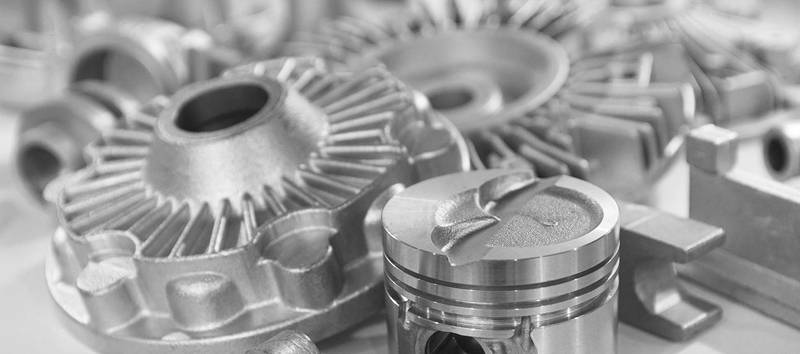Introduction
In high-corrosion environments, equipment components are constantly exposed to elements that can lead to rapid degradation, costly repairs, and unexpected downtime. To maintain reliable performance and prolong equipment lifespan, selecting the right spare parts becomes essential. By choosing materials and components specifically designed to withstand corrosive conditions, companies can minimize maintenance needs, enhance safety, and optimize overall operational efficiency. This introduction explores key best practices for selecting spare parts in high-corrosion environments, highlighting strategies that can safeguard critical assets and ensure smooth, cost-effective operations even in the harshest settings.
Material Selection: Prioritize materials that are highly resistant to corrosion, such as stainless steel (especially grades like SS316 and SS316L), titanium, cupronickel, and high-performance alloys. These materials offer durability and resist corrosion caused by chemicals, saltwater, or other corrosive substances.
Coatings and Surface Treatments: Apply corrosion-resistant coatings, such as epoxy, zinc, or polymer-based coatings, to protect parts exposed to harsh conditions. Coatings can shield materials from direct exposure to corrosive elements, extending the lifespan of components.
Consider Environmental Factors: Assess specific environmental conditions, including temperature, humidity, chemical exposure, and abrasive elements, to select parts designed for those stressors. Tailoring parts to match environmental demands enhances their performance and reduces the risk of premature failure.
Opt for Sacrificial Anodes: In environments prone to electrochemical corrosion, sacrificial anodes made from materials like zinc or magnesium can protect essential metal components by attracting corrosive elements. This sacrificial layer takes the damage instead of critical parts.
Use Non-Metallic Parts Where Possible: Non-metallic parts, such as fiberglass, high-density polyethylene (HDPE), and certain composites, are resistant to corrosion and can be effective alternatives for specific applications, especially in highly corrosive environments.
Choose Modular Components: Modular designs allow for easier replacement and isolation of corroded parts without dismantling the entire system. This design reduces maintenance time and costs and helps maintain overall system integrity.
Supplier Verification and Quality Standards: Work with suppliers who adhere to quality standards, such as ISO certifications, and provide reliable, corrosion-resistant parts. Verified suppliers ensure materials meet the specifications required for high-corrosion applications.
Implement Regular Inspection and Testing: Regularly inspect parts to identify early signs of corrosion, pitting, or wear. Using methods like ultrasonic thickness testing or X-ray analysis helps detect hidden corrosion, allowing timely replacement.
Plan for High-Quality Spare Stocking: Keep a stock of high-quality, corrosion-resistant spares on-site. This approach reduces downtime when replacements are needed, as parts are readily available without delay.
Consider Cost vs. Durability: While corrosion-resistant materials can be more expensive, they save costs in the long term by preventing frequent replacements, reducing maintenance needs, and avoiding extensive damage.
Custom Fabrication for Unique Requirements: In some cases, custom-fabricated parts designed specifically for the environment may be necessary. Custom parts can be tailored for maximum corrosion resistance, especially in complex or specialized applications.
Corrosion-Resistant Fasteners and Seals: Use fasteners, seals, and gaskets made from corrosion-resistant materials to ensure the integrity of assemblies. Stainless steel or composite fasteners and high-quality gaskets help prevent leaks and corrosion at joints.
Document and Track Performance: Record data on spare parts’ performance over time to identify patterns of corrosion or failure. This information can guide future purchasing decisions, improve maintenance practices, and allow better planning for replacements.
Consider Advanced Alloys for Extreme Conditions: For environments with extreme corrosive exposure, advanced alloys like Hastelloy, Inconel, and Monel offer exceptional resistance to highly corrosive agents, particularly in chemical processing or marine environments.
Corrosion Inhibitors: In certain cases, corrosion inhibitors can be applied to parts or systems to chemically protect surfaces from corrosive elements. This additional layer of protection can further extend the life of key components.
Conclusion
selecting the right spare parts for high-corrosion environments is crucial for maintaining the durability, safety, and efficiency of industrial systems. By prioritizing corrosion-resistant materials, using protective coatings, working with trusted suppliers, and implementing proactive inspection practices, companies can significantly reduce maintenance costs and downtime. Investing in high-quality, well-suited spare parts ultimately enhances equipment reliability and ensures continuous operation in even the most challenging conditions. Embracing these best practices provides a sustainable approach to managing corrosion, preserving valuable assets, and supporting long-term operational success.

